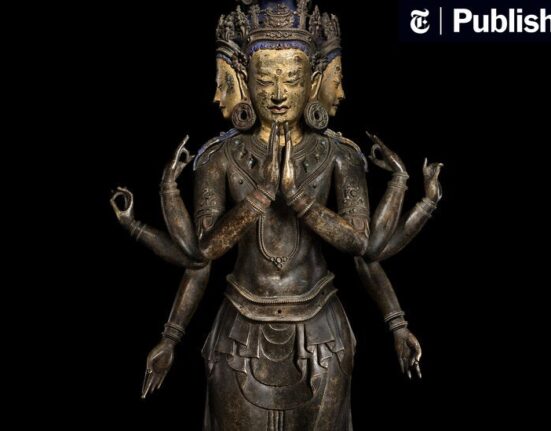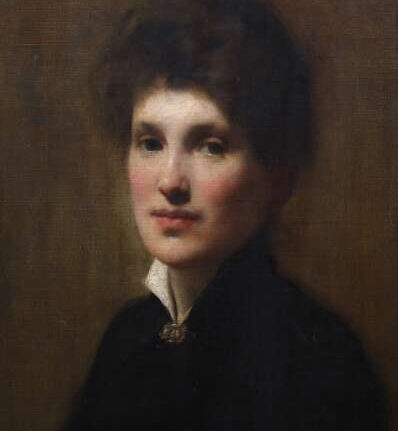This striking head of Amun shows him wearing the generic flat-topped crown that would have been surmounted with tall feathers – one of the chief god’s common attributes. His facial features however, are quite particular: he has slightly tilted almond-shaped eyes, a full mouth and full cheeks. This allows a secure association with portraits of the young Tutankhamun. As M. Eaton-Krauss notes (p. 53 in The Unknown Tutankhamun), “Well over fifty sculptures of Amun, some depicting him alone as a single figure and others showing him in the company of other deities and/or the king, are dated by an inscription, or datable on the basis of stylistic and/or iconographic criteria, to the post-Amarna period.” Of these, a large number in a variety of stone types may be identified as Tutankhamun, no doubt as the result of the extensive restoration of the Amun cult at Thebes and elsewhere carried out during his short reign. Representations of Amun with the features of Tutankhamun are known in sandstone, limestone, indurated limestone, diorite, and calcite, in addition to a relatively small number in quartzite and granodiorite, most prominent of which is an over-life size masterpiece now in the Metropolitan Museum of Art (see no. 245 in R.E. Freed, et al., eds., Pharaohs of the Sun: Akhenaten, Nefertiti, Tutankhamen). The diversity of materials represented among images of Amun carved during Tutankhamun’s reign was likely intentional, intended to compensate for the destruction during the reign of Akhenaten of an extraordinary variety of images of Amun, most of which had been sculpted beginning in the Middle Kingdom in the course of the rise of the cult of Amun at Thebes.
Likely carved in the earliest years of the reign of Tutankhamun, this head evinces a close relationship to the style of the Amarna period, especially to the astonishing portraits carried out in plaster in the Thutmose workshop that represent stages in the production of finished works in stone (see D. Arnold, The Royal Women of Amarna: Images of Beauty from Ancient Egypt, pp. 46-51). In particular, these plaster portraits share with the present head the almond-shaped eyes and the flat treatment of the upper eyelid, features which strongly link this work to the Amarna workshop. This sensitively carved head in granodiorite may therefore represent a product of a sculptor trained in the Amarna workshop of Thutmose, the master sculptor who is thought to have carved the famous painted limestone bust of Nefertiti now in Berlin. In her exhaustive study of the style of various sculptors active in this workshop, Arnold has suggested that the youngest member of the workshop (her “Sculptor Four”) carried out an imposing monolithic granodiorite pair statue of Akhenaten and his queen, now best known from its most impressive fragment, a head depicting Nefertiti in the Berlin Ägyptisches Museum (see fig. 72 in Arnold, ibid.). A total of 188 other fragments of granodiorite have been ascribed to this pair statue; sculpture in this stone seems to have been a speciality of this sculptor and his section of the workshop. Drawing a close parallel to the granodiorite head of Amun in the Metropolitan Museum of Art, Arnold (op. cit., p. 83) concludes that it “stands out as an image of Nefertiti that has remarkable links with the post-Amarna period. Its style may even indicate that some members of the Thutmose workshop joined the sculptors who worked for the temples of Thebes during the reign of Tutankhamun.”
The original format of this statue, broken at the neck and at the crown, and with traces of a back pillar, is difficult to reconstruct. Possibly it derived either from a seated representation of Amun alone (as in seated statues in Karlsruhe and Hannover), or seated behind a smaller image of the young pharaoh, as seen in an example in the Louvre (see fig. 245 in Freed, et al., eds., op. cit.).







